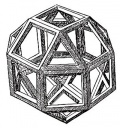Beaver
From The Art and Popular Culture Encyclopedia
| Revision as of 11:09, 17 July 2008 Jahsonic (Talk | contribs) ← Previous diff |
Current revision Jahsonic (Talk | contribs) |
||
| Line 1: | Line 1: | ||
| {{Template}} | {{Template}} | ||
| # An [[aquatic]] [[mammal]] of the genus ''[[Castor]]'', having a wide, flat tail and webbed feet. | # An [[aquatic]] [[mammal]] of the genus ''[[Castor]]'', having a wide, flat tail and webbed feet. | ||
| - | # The [[pubic hair]] and/or [[vulva]] of a woman. | + | # The [[pubic hair]] and/or [[vulva]] of a woman, see [[beaver shot]]. |
| + | == Commercial uses == | ||
| + | Both beaver testicles and [[castoreum]], a bitter-tasting secretion with a slightly fetid odor contained in dried preputial or vaginal follicles of male or female beaver, have been articles of trade for use in traditional medicine. [[Yupik]] ([[Eskimo]]) medicine used dried beaver testicles like willow bark to relieve pain. Beaver testicles were exported from [[Levant]] (a region centered on [[Israel]]) from the tenth to nineteenth century. [[Claudius Aelianus]] comically described beavers [[chewing off]] their [[testicle]]s to preserve themselves from hunters, which is not possible because the male beaver's testicles are inside its body. European beavers (''[[Castor fiber]]'') were eventually hunted nearly to extinction in part for the production of castoreum, which was used as an [[analgesic]], [[anti-inflammatory]], and [[antipyretic]]. Castoreum was described in the 1911 [[British Pharmaceutical Codex]] for use in [[dysmenorrhea]] and [[hysterical]] conditions (i.e. pertaining to the womb), for raising [[blood pressure]] and increasing [[cardiac output]]. The activity of castoreum has been credited to the accumulation of [[salicin]] from willow trees in the beaver's diet, which is transformed to [[salicylic acid]] and has an action very similar to aspirin. Castoreum continues to be used in [[perfume]] production. | ||
| + | |||
| {{GFDL}} | {{GFDL}} | ||
Current revision
|
Related e |
|
Featured: |
- An aquatic mammal of the genus Castor, having a wide, flat tail and webbed feet.
- The pubic hair and/or vulva of a woman, see beaver shot.
Commercial uses
Both beaver testicles and castoreum, a bitter-tasting secretion with a slightly fetid odor contained in dried preputial or vaginal follicles of male or female beaver, have been articles of trade for use in traditional medicine. Yupik (Eskimo) medicine used dried beaver testicles like willow bark to relieve pain. Beaver testicles were exported from Levant (a region centered on Israel) from the tenth to nineteenth century. Claudius Aelianus comically described beavers chewing off their testicles to preserve themselves from hunters, which is not possible because the male beaver's testicles are inside its body. European beavers (Castor fiber) were eventually hunted nearly to extinction in part for the production of castoreum, which was used as an analgesic, anti-inflammatory, and antipyretic. Castoreum was described in the 1911 British Pharmaceutical Codex for use in dysmenorrhea and hysterical conditions (i.e. pertaining to the womb), for raising blood pressure and increasing cardiac output. The activity of castoreum has been credited to the accumulation of salicin from willow trees in the beaver's diet, which is transformed to salicylic acid and has an action very similar to aspirin. Castoreum continues to be used in perfume production.

